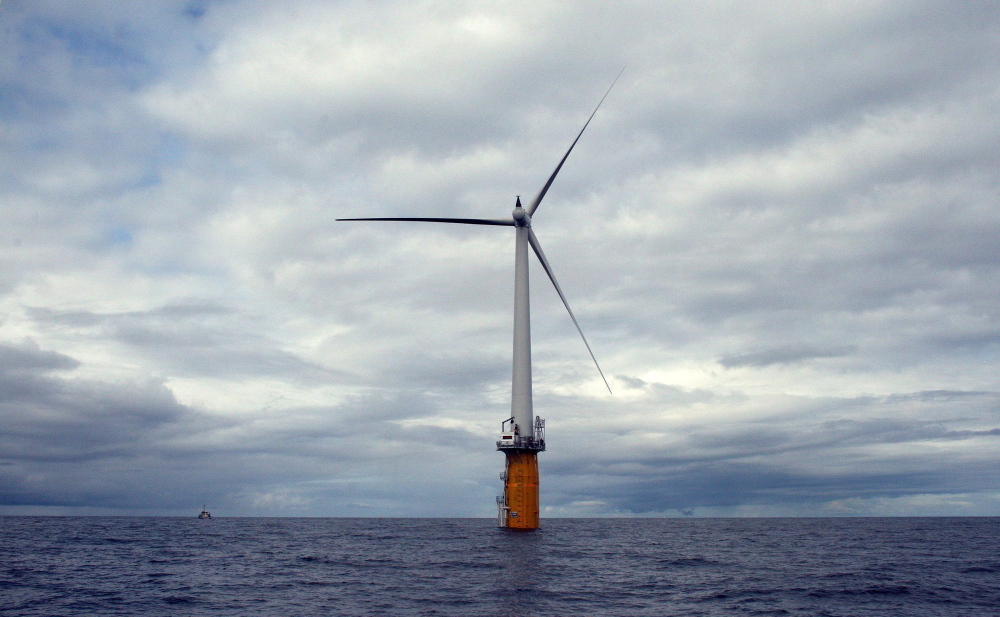Gov. LePage’s chief energy adviser, Patrick Woodcock, had most of the details right in his assessment of a $2.5 billion investment in an offshore wind farm in England by Norwegian energy giant Statoil. But his conclusion was way off.
Statoil is the same company that pulled out of an ocean wind project in Maine after Gov. LePage backed out of a state commitment to buy power from the company’s experimental floating wind farm here.
Woodcock dismissed the significance of Statoil’s latest investment and said the new wind farm in England would use already proven technology that was different from what had been proposed in Maine. He is correct.
And he said that the fixed turbine technology that Statoil is building in England would not work off Maine’s coast, because the deep water here would require the use of still-not-perfected floating platforms. That is also correct.
And he said that Statoil is a huge energy company that “makes billion-dollar investments all the time.” That’s true, too – which is exactly why Woodcock is wrong and why losing a relationship with this company is a big deal for Maine. Statoil should have been encouraged to stay here and make some of those investments here.
Instead, in order to advance the political agenda of a minority of the state’s residents, “open-for-business” Maine intentionally chased off a company that routinely makes multibillion-dollar investments in energy production.
Wind power has been smeared by conspiracy theorists and climate change deniers as nothing more than a means to bleed subsidy money from the taxpayers to line the pockets of a wealthy few.
But, as investments like Statoil’s show, wind is an established alternative energy resource and a profitable business that can reduce an overreliance on fossil fuels. As the technology improves, land-based wind is producing increasingly competitive prices for electric power, and ocean wind – where the wind is stronger and there is enough room to build on a large scale – has the potential to create power at even lower costs.
Maine was a leader in developing this form of energy, but it has lost its head start. Other states, including Maryland, Massachusetts and Rhode Island, likely will now be considered more attractive places for investors.
The University of Maine’s collaboration, Aqua Ventus, received a $3 million grant from the U.S. Department of Energy, far less than the $46 million grant that projects in New Jersey, Virginia and Oregon got – a sign that in the judgment of the experts, the Maine project is still not ready for prime time.
The technology that Statoil was testing in Maine has been tested for some time off the coast of Norway, and it was a safer bet than the university’s still-developing technology. Aqua Ventus’ project has more long-term potential for creating a wind-industry supply chain in Maine, since more of the components could be made here,
The state could have had both. Statoil could have continued to develop its floating platform technology off Maine, and when it was ready to bring the power to market, it would have made its investment here. The university could have continued its research and improved its technology, making a product that would be more cost-effective and attract investment.
Instead, investors will have to think twice about risking their money in a state that can play favorites and change policy without warning.
Gov. LePage often says, “Capital goes where it’s welcomed and stays where it’s appreciated.”
Statoil’s billion-dollar investments were not welcome in Maine. They appear to be appreciated in Britain.
Maine may never get the chance for this kind of investment again.
Send questions/comments to the editors.



Comments are no longer available on this story